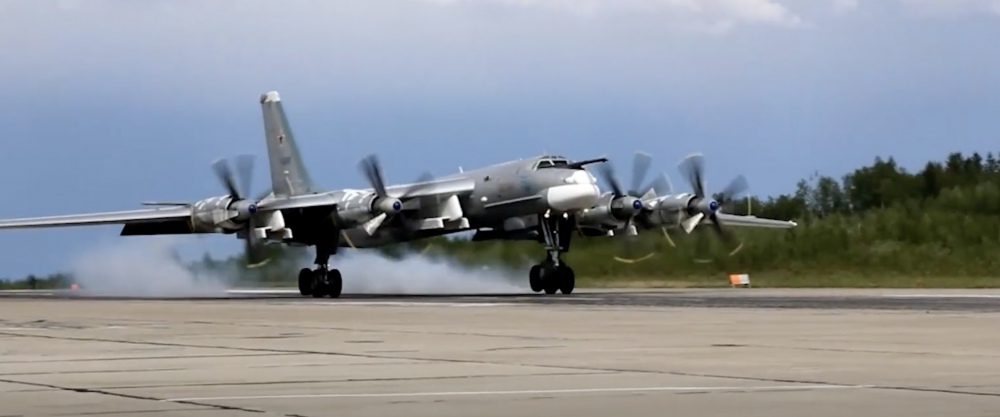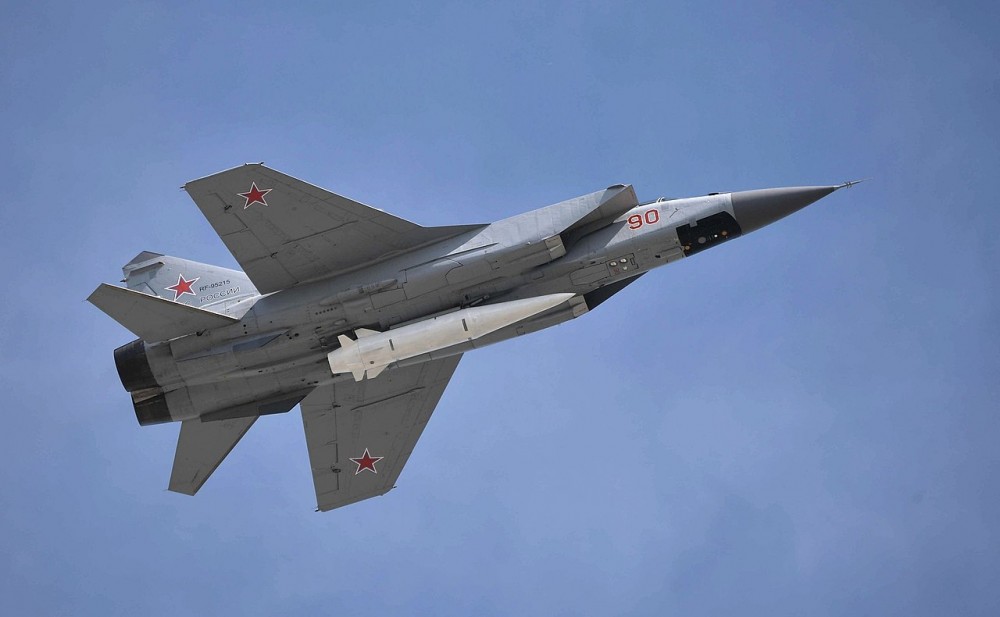As Russia is flexing semi-ballistic destruction, Norway doubles up on missile defense

The pair of Tu-95MS bombers that on Monday flew north of Finnmark region had empty external pylons for cruise missiles under the wings. For Norway, though, the growing concern is not only Russia’s cruise missiles, but the more advanced short-range ballistic missiles, like the Iskander-M and Kinzhal. Weapons that can hit targets up north within minutes.
Russia’s Northern Fleet fighter jets escorted the long-range bombers from Olenya air base on the Kola Peninsula as the planes headed west over the Barents Sea. These are the very same bombers that frequently fly south to launch cruise missiles against targets in Ukraine.
In the video made public by the Defense Ministry in Moscow, four white pylons under the wings were highly visible. Here, the Kh-101 / Kh-102 cruise missiles are attached when the planes bring the deadly payloads to launch positions outside Ukrainian airspace.

Although Norway has very limited protection up North against low flying Russian cruise missiles, such weapons can be taken down. The war in Ukraine shows the importance of anti-missile defense.
The Storting, Norway’s Parliament, on Tuesday unanimously approved the long-term Defence Plan which stipulates a doubling of Surface-to-Air missile system. Domestically developed NASAMS will be improved to better take down drones and missiles.
New in this plan is long-range air defence against Russia’s short-range ballistic missiles (SRBM). That is weapons practically flying via space before half-steering, falling down at a target in supersonic speed.
Iskander-M
The mobile based Iskander-M missiles with a range of 500 km flies in a semi-ballistic altitude of up to 50 km. For Russia, though, the system is vulnerable. The longer into Finnish or Norwegian territory targets are, the closer to the frontier the launchers must be moved. If in the near-border Pechenga region, where the 200th Motorized Rifle Brigade and the 61st Naval Brigade are based, Norway can take it out before missiles are fired. In a conflict scenario that is.

Aero-ballistic Kinzhal
More problematic is Kinzhal. The aero-ballistic missile can, like Iskander-M, carry both a high-explosive conventional warhead or a tactical nuke. The missile, which can be considered a air-launched version of the Iskander, was presented by Vladimir Putin as one of six new nuke carrying weapon systems during his annual speech to the Federation Assembly in 2018.
A year later, Russia’s top General Valeri Gerasimov confirmed the existence of Kinzhal in the Arctic.
“The Kinzhal aviation missile system with a hypersonic missile is on experimental combat duty. These missiles were launched at training grounds in various climate conditions, including in the Arctic,” the General said.
“At the same time, a network of airports is under development, providing an expansion of the geography of the use of this [missile] complex.”
– Valeri Gerasimov –
Today, five years later, those airports are fully operational and the Kinzhal has proven operational against Ukraine.
Kinzhal is carried by the MiG31K fighter jet. This aircraft has support infrastructure in the European High Arctic at Rogachyovo on the southern island of Novaya Zemlya and Nagurskoye on the Aleksandra lsland at Franz Josef Land.
At the Kola Peninsula, MiG31K are on stand-by for take off from the air base in Monchegorsk. If carried by a Tu-22M3 bomber it will fly out of Olenya air base next to the town of Olenegorsk.
Wikipedia says the MiG-31K has a combat range when flying at Mach 2,8 of about 400 km. The Iskander-M ground-based missile has a range of 500 km. If we take that as a minimum range of Kinzhal, the missile’s target destruction range will be equal to at least 1,000 km. Other sources claim the range to be up to 2,000 km.

Practically all military airports in the northern regions of Norway, Finland and Sweden are within range of the air launched Kinzhal.
Invincible for radar tracking
Of bigger concern than the range itself is the extremely short warning time to activate any anti-missile defense systems. If such at all can take down a short-range ballistic missile. The fighter jets speed makes it very hard to track on radar as the location for launch is unpredictable.
From aircraft take-off, to launch of missile, to impact can be as short as 12-15 minutes.

Asked by the Barents Observer about radar upgrade plans and locations for future anti-ballistic defense systems, the Defense Ministry in Oslo is reluctant to comment.
“Air defense systems are by their nature mobile and which areas and functions are to be protected will be based on operational assessments that originate from the military’s secret planning,” says State Secretary Marie Lamo Vikanes in an email to the Barents Observer.
The Ministry will neither tell if civilian infrastructure, like the Hammerfest LNG plant in Finnmark, will get defense systems against short-range ballistic missiles.
“The Defence’s primary task is to protect its own ability to operate and solve the military’s own tasks,” Vikanes underlines.
In Ukraine, Russian missiles are more and more targeting civilian infrastructure, and then especially the energy sector.

Norway’s new long-term Defense Plan says it will be invested in two long-range defense systems to protect against short-range ballistic missiles. One will be earmarked for Oslo. The other is not said.
Both Ørland air base, home to the fleet of F-35, and Evenes air base, home to the P-8 Poseidon and a pair of F-35 on stand-by for NATO policing, are in need of such protection.
State Secretary Marie Lamo Vikanes says cooperation with NATO is key to track possible missile attacks towards Norway from the north.
“The armed forces will utilize a number of sensors for the early detection of threats, and the defense’s aerial surveillance is part of NATO’s chain of sensors for a common picture. The National Air Operations Center will use all available resources to monitor national airspace, here both land-based, vessel-based and airborne sensors are included in a comprehensive network of sensors,” she elaborates.
Located in Kirkenes, Norway, just a few kilometres from the borders to Russia and Finland, the Barents Observer is dedicated to cross-border journalism in Scandinavia, Russia and the wider Arctic.
As a non-profit stock company that is fully owned by its reporters, its editorial decisions are free of regional, national or private-sector influence. It has been a partner to ABJ and its predecessors since 2016.